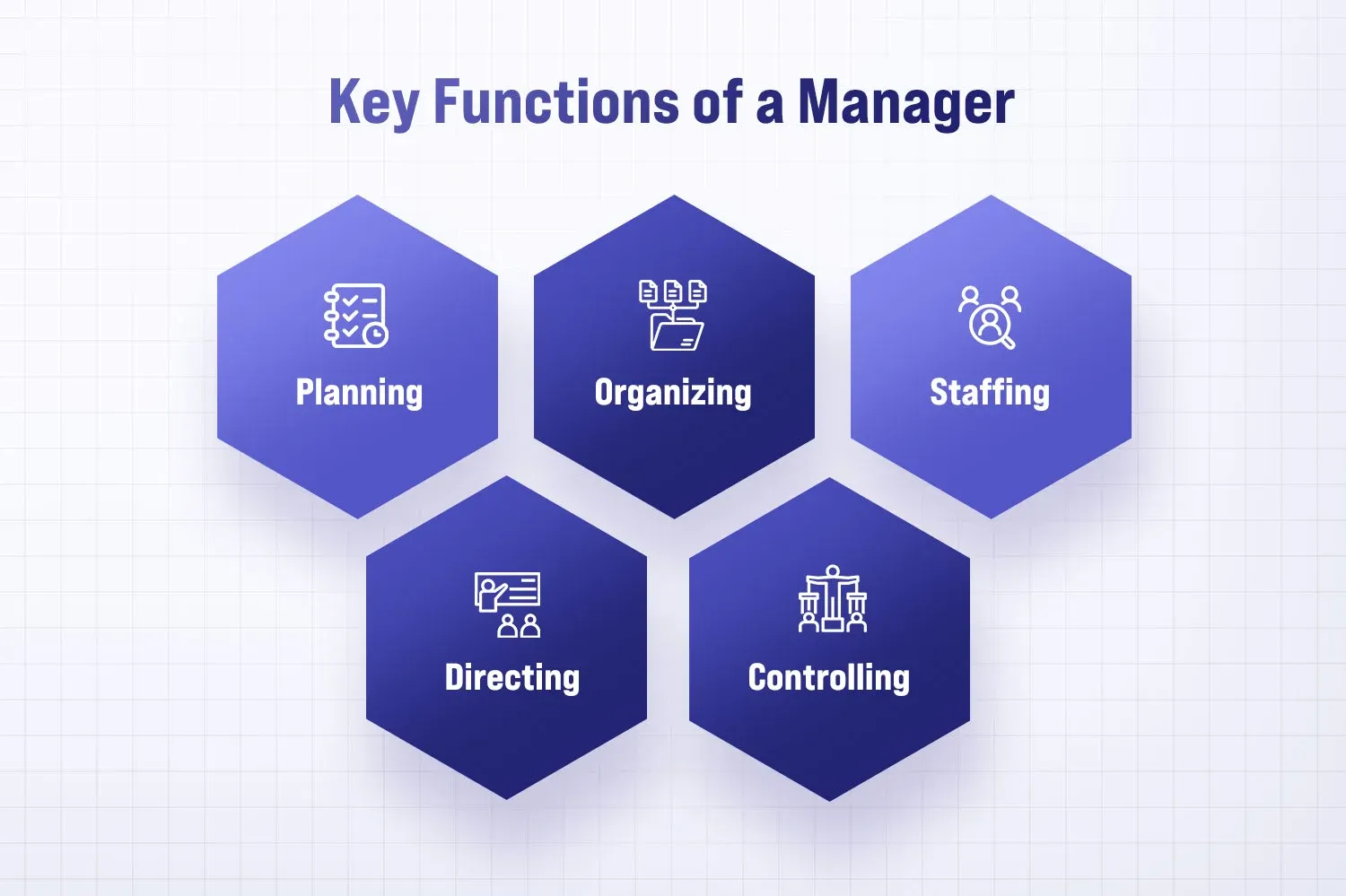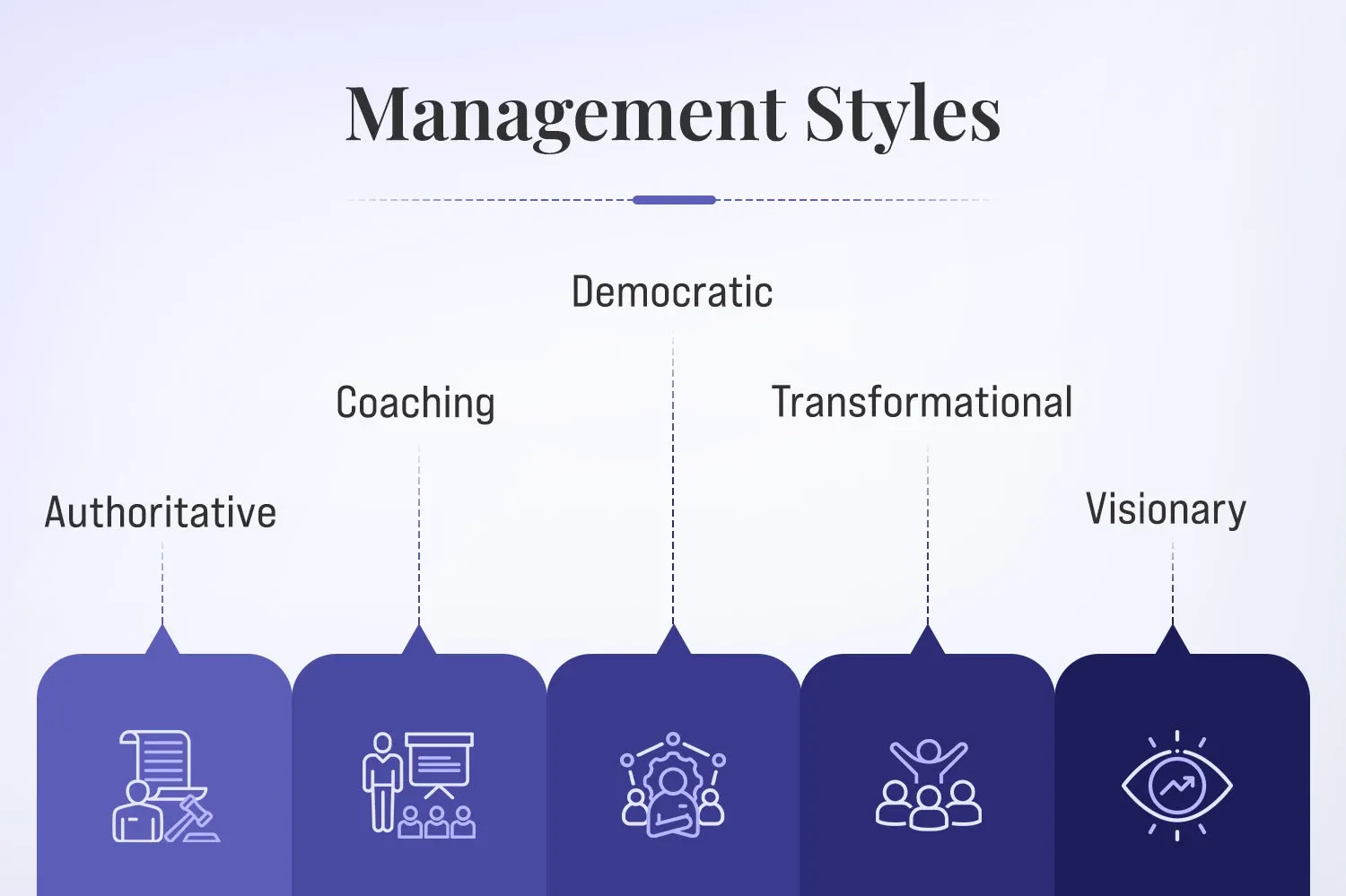What is Management? Key Functions and Characteristics.

In its purest sense, management is the engine that drives all processes within an organization, nonprofit, or institution to achieve shared goals. It is not merely supervision of work, but to have a roadmap, to empower individuals, and to lead the business through smooth and turbulent conditions.
In an environment where change is rapid, competition is intense, and innovation is the norm; management is the driving force that converts ideas into reality. But what is the best way to describe this important role in a way that is reflective of its complexity and importance? This article discusses management, its fundamental components, and the crucial roles it plays in organizations.
Management can be described as a process of planning, organizing, and directing resources so as to accomplish organizational goals efficiently. At the Altera Institute, students acquire practical knowledge and experience, making them career-ready and employable. See how our programs prepare you to succeed in the real world as a manager.
Defining Management?
Management is an organized process of planning, organizing, leading, and controlling resources to achieve specified organizational targets with accuracy and effectiveness. It entails organizing individuals, plans, and structures to make sure that operations run smoothly, grow sustainably, and deliver unwavering output in all activities of the company.
More than just supervision, management blends analytical thinking, decision-making, and leadership to align daily efforts with long-term goals. It helps companies stay organized, respond to change, and maximize the effective use of time, money, and resources.
Management is not limited to big businesses; it applies everywhere—schools, hospitals, sports teams, and even your personal life. Wherever there are goals to achieve and people involved, management plays a key role in making things happen smoothly and successfully.

Key Functions of a Manager
The set of responsibilities of a manager does not end with delegating tasks to others. In fact, competent management is a sequence of clear-cut functions that enable an organization to operate effectively and achieve its objectives. They are normally divided into five basic roles, which include strategizing, coordinating, hiring, supervising, and evaluating. Let's break each one down:

Planning
The first and most important thing is the function of planning. It involves planning, deciding what to do, how to do it, and delegating responsibilities. Planning helps managers eliminate uncertainties and remain prepared to meet challenges. For example, a manager will outline the financial strategy, timeline, marketing strategy, and production stages before supporting the launch of a new product. Therefore, planning develops a smooth roadmap for individuals and teams to meet the goals.
Organizing
Organizing is the next step after establishing a plan. These include how resources, such as people, funds, equipment, and time, are organized to facilitate the plan. This role entails setting tasks, activities, and allocation of resources such as tools, time, and money. It ensures clarity in the role and provides teams with the tools to succeed. Coordination helps ensure that individual tasks are synchronized with the overall objectives.
Staffing
Without the right individuals, there will be no plans to be implemented. Staffing deals with the identification, selection, training, and retention of the most skilled employees in a specific position or work. Managers not only hire talent, but they also strive to develop their competencies and position them in a role where they excel. One of the most valuable resources of a company is a coherent and talented team.
Directing
Directing is where the human aspect of management comes into play. It enables success in managing, motivating, and influencing workers to give their best to their job. Managers identify objectives, clarify conflicts, deliver effective feedback, and maintain a healthy working environment. A leader is not a person who just tells what to do to the team; he or she draws the best out of his or her team.
Controlling
Lastly, controlling entails measuring the output and determining whether it matches the initial plan. Managers compare actual outcomes with benchmarks and make amends where required. This role supports quality and puts the organization on track. This helps ensure that goals are being met, resources are being used efficiently, and problems are addressed before they escalate.
Levels of Management
In all organizations, be it a large multinational organization or a small startup, work is not done by one single individual or even one team. Rather, the work is divided among different levels of authority, each with a distinct set of responsibilities and focus areas. Although job titles can be different in each of the organizations, there are three generally accepted levels:
- Top-Level Management (Strategic Level)
- Middle-Level Management (Tactical Level)
- Lower-Level Management (Operational Level)
These levels serve various purposes in ensuring that the business operates efficiently and in line with its objectives. Let's explore them one by one.
Top-Level Management
The highest level of executive is where the overall vision and direction of the organization is established, and the key players are the CEO, COO, CFO, the managing directors, and the governing boards. They are the ones who do long-term planning, such as the mission and vision of the organization, and make business decisions that affect the whole organization.
They strike a balance between internal processes and external factors like market factors, economic changes, and technological advancement. Their choices affect far and wide, not only the policies and budgets of the companies but also the alignment of the goals of various departments.
Top-tier leaders reflect the organization's image to the outside world as they regularly interact with investors, partners, and stakeholders. They are determined to ensure that the company has a long survival, profitability, and competitive advantage in the market.
Middle-Level Management
The middle-level managers create a link between the top management and the frontline managers. Their main task is to interpret strategic plans into practical objectives, so that the decisions made by the top management are achieved at the ground level.
Common roles in this tier include department heads, regional managers, division managers, or team leads. They are typically responsible for supervising lower-level managers, managing teams across departments, and ensuring that operations are progressing according to plan.
Middle managers also develop systems, coordinate departments, and distribute resources. They are commonly known as player-coaches, as they lead others and are themselves involved in the work process. They also have a significant role in recruiting, training, and mentoring frontline managers to ensure the organization has good internal leadership in the future.
Lower-Level Management
At the base of the management hierarchy is the lower level, often referred to as first-line or operational management. These are the managers who work directly with employees and teams that produce the organization's goods or services. Their titles may include supervisor, line manager, or assistant manager.
Frontline managers are responsible for day-to-day operations, including ensuring that tasks are completed on time, quality standards are met, and customer concerns are addressed promptly and effectively. They track team performance, offer constructive input, and bridge communication between employees and senior leaders.
Though their role may seem more task-oriented, frontline managers have a huge impact on employee morale, productivity, and workplace culture. As they work directly with staff, their leadership and communication skills are critical to the cohesion of a team.
Management Styles

Authoritative
The authoritative management style is characterized by a top-down approach. Managers decide on their own and would want the team members to obey the instructions with minimal input or feedback. The style is based on clarity, structure, and control, and is optimal in situations where fast decisions and similar results are needed.
Authoritative leaders are confident, directive, and focused on results, often setting strict policies and guidelines to maintain discipline and efficiency across the team.
Coaching
Within the coaching style, managers become mentors who are concerned with staff development and personal growth. They do not merely delegate responsibilities, but also help in their development through continuous advice, encouragement, and mastery training. This is also a very individualistic style, fostering a strong bond between team members and the manager.
It is about realizing potential by helping a person identify their strengths, working on their weaknesses, and guiding them towards a long-term career objective. Mentoring managers are tolerant, understanding, and committed to the development of each team member.
Democratic
The democratic style is based on collaboration and team involvement. Leaders who use this style foster teamwork by seeking input and activating group decision-making. It is a culture that places a high value on transparency and accountability, creating a working environment where all employees feel respected and valued.
Democratic managers believe that group input is often the best solution, and they strive to foster an open environment that encourages creativity and teamwork.
Transformational
Transformational managers are inspirational and visionary. They seek to take their team performance to a higher level by encouraging people to push themselves to greater heights. Such managers tend to disrupt the usual, spearhead innovation, and set quite ambitious objectives, as they believe that individuals work best when motivated by a shared cause.
They are the leaders who influence through examples, the ones who believe in innovation and refinement. A transformational leader does not merely control; they influence attitudes and create a culture of high energy and achievement-driven behavior.
Visionary
The visionary style focuses on the bigger picture. These managers are less concerned with the daily grind and more focused on aligning their team with the long-term mission and purpose of the organization. By clearly communicating a compelling vision, they inspire employees to work with passion and creativity.
Visionary managers are often charismatic and future-focused, encouraging innovation and risk-taking among self-driven teams. They are aimed at making employees see the worth of their contribution to a larger cause.
Careers in Management
The most popular management careers include the following:
Marketing Managers
Marketing managers are tasked with creating strategies that will publicize the company's products or services to the target audience. They follow market trends, read consumer preferences, and spearhead cross-media campaigns that cut across digital and traditional media.
These managers usually have a creative team to manage and work closely with the sales and product departments to ensure that the campaigns are in line with business goals. To be effective in this position, one must be innovative, communicative, and make factually informed decisions.
Financial Managers
Financial managers are responsible for overseeing the financial health of an organization. Their responsibilities include preparing financial reports, developing investment strategies, managing budgets, and ensuring compliance with financial regulations.
They can head a group of accountants or analysts and give advice to the senior management on financial planning and risk management. This post involves acute analytical abilities, careful research, and familiarity with financial systems.
Healthcare Managers
Healthcare administrators or healthcare managers are involved in the smooth running of hospitals, clinics, or other healthcare institutions. They control employees, budgets, enhance patient care mechanisms, and guarantee adherence to medical legislation and policies.
These managers have to find a balance between patient-centered care and administrative efficiency. Being an outstanding organizer, having a thorough idea of what the healthcare industry is all about, and maintaining a cool head during stressful situations are key attributes needed to succeed in this position.
Sales Managers
Sales managers lead teams that sell products or services. They set sales targets, develop strategies to reach them, and monitor team performance. These managers provide training and motivation to the sales representatives, evaluate sales performance, and develop relationships with influential clients.
They are focused on increasing sales and enhancing client experience. The key qualities of this position include good leadership, communication, and a strong knowledge of the product as well as the market.
Characteristics of Management
Let’s explore three key characteristics of management that help us understand its role in any successful team or organization.
Multi-dimensional
At its essence, management revolves around orchestrating tasks, teams, and processes. Work management refers to organizing tasks, projects, and deadlines, which even entry-level employees might experience through project-based assignments.
Effective people management goes deeper, focusing on team well-being, motivation, performance, and career growth through regular check-ins and constructive feedback. Operations management ensures that processes run smoothly and efficiently—think of logistics, resource planning, or service delivery. These dimensions come together to show that management is about balancing multiple responsibilities to achieve shared goals.
Dynamic
Management is not static but rather evolves with the needs of the team, organization, and environment. Managers rarely deal with one-time tasks. Instead, they juggle ongoing responsibilities, such as tracking goals (OKRs), mentoring team members, adjusting schedules, and managing budgets.
Managers are expected to maintain a composed demeanor and rely on teamwork, even in the face of a crisis. This flexibility is fundamental to success in management, and it is a testament to the fact that good managers must learn, develop, and continually walk with confidence and reliability.
Intangible
While you can see the effects of management, the act of managing itself is invisible and abstract. It exists in how leaders communicate, align decisions, and influence culture. A great example is when a management team presents a unified front—even if they internally disagree with each other- to avoid confusion and maintain team trust.
This invisible force helps build a strong organizational culture based on unity, respect, and collaboration. It proves that management isn’t just about tasks and systems—it’s also about the invisible leadership energy that holds teams together.
Objectives of Management
Management can be classified into three categories: organizational, social, and personal or individual.
Organizational Objectives
Essentially, every business will have specific economic targets that it intends to achieve, which will ensure its survival, profitability, and future growth. They are called organizational objectives, and they are the activities that give the business an obligation to ensure it uses its resources well and attends the needs of its stakeholders, such as owners, employees, customers, and investors. These objectives include:
- Survival: The most fundamental goal. A company must sustain profitability to cover expenses and remain viable in its industry.
- Profit: Beyond survival, businesses must earn profit to sustain operations, invest in innovation, and cushion against future uncertainties.
- Growth: Management aims to expand the business over time—whether through increased sales, hiring additional employees, opening new branches, or introducing new product lines—ensuring the firm’s relevance and competitiveness.
Social Objectives
Businesses operate within a broader social environment and have a duty to contribute positively to it. Social objectives are focused on giving back to the community, protecting the environment, and uplifting underprivileged groups. These include:
- Providing quality goods and services at fair prices.
- Employing eco-friendly production management methods to reduce harm to the environment.
- Generating employment opportunities, especially for the weaker sections of society.
- Supporting employee welfare through basic amenities like crèches, schools, and health facilities.
These objectives help build goodwill and ensure that the organization grows in harmony with society.
Personnel Objectives
The purpose of personnel objectives is to address the needs, dreams, and development agenda of employees, as organizations consist of individuals. Motivated employees are more likely to work harder and be more loyal. These objectives involve:
- Financial Needs: Paying competitive wages, incentives, and financial perks.
- Social Needs: Ensuring equality, respect, and having a positive work culture.
- Self-Development Needs: Training, promotions, and personal growth opportunities.
By achieving these objectives, leadership will develop a workforce that feels valued, inspired, and has an intrinsic attachment to the company's purpose.
Importance of Management
Management is the key to successful business as it involves maximizing human, financial, and material resources to achieve strategic objectives. The following are reasons why management is necessary:
- Helps Achieve Goals: The management clarifies the organizational goals and directs individual efforts towards the same direction. It helps to structure and coordinate people, processes, and resources, converting disordered effort into organized action that produces results.
- Optimizes Resource Utilization: Through effective planning and coordination, management ensures that no resource is underutilized or wasted. Whether it's manpower, machines, money, or materials, management selects the best use for each, leading to maximum productivity.
- Reduces Costs: With smart strategies and efficient resource handling, management helps minimize inputs while maximizing outputs. This efficiency enhances revenue and strengthens the organization’s market position over time.
- Establishes Organizational Structure: Management clearly defines roles, responsibilities, and reporting relationships. This eliminates ambiguity, duplication of efforts, and creates a strong base for efficient operations at all organizational tiers.
- Maintains Adaptability: Markets, technology, and customer needs are constantly changing. By staying in touch with these external changes, management helps organizations meet the demands of these changes, thereby ensuring their survival and long-term development.
- Contributes to Social Well-being: Efficient management translates to increased productivity, which in turn leads to the production of high-quality products, job creation, higher income levels, and ultimately, improved living standards. It is not only good for the businesses, but also for society as a whole.
FAQs
Q1. What is management in 5 words?
Ans: Planning, organizing, leading, controlling, coordinating.
Q2. What is the meaning of management in business?
Ans: Business management can be defined as the direction and coordination of all business activities, such as planning, staffing, budgeting, and decision-making, to make sure the organization is operating efficiently and fulfilling its objectives and competitive position in the market.
Summing Up
The success of any organization, regardless of its size or nature, whether public or private, is largely supported by effective management. It enables translation of vision to action through the cohesiveness of people, resources, and strategy in an organized and goal-oriented manner. Management offers discipline and flexibility to overcome challenges, pursue opportunities, and drive sustainable growth through planning, organizing, directing, and controlling.
Whether running a business, supervising a team, or pursuing your own objectives, understanding the principles and practices of management can enable you to make better choices, engage with others, and achieve long-term outcomes. As industries evolve and workplaces become more dynamic, the role of effective management will only grow in importance—making it an essential skill for every aspiring professional and leader.





